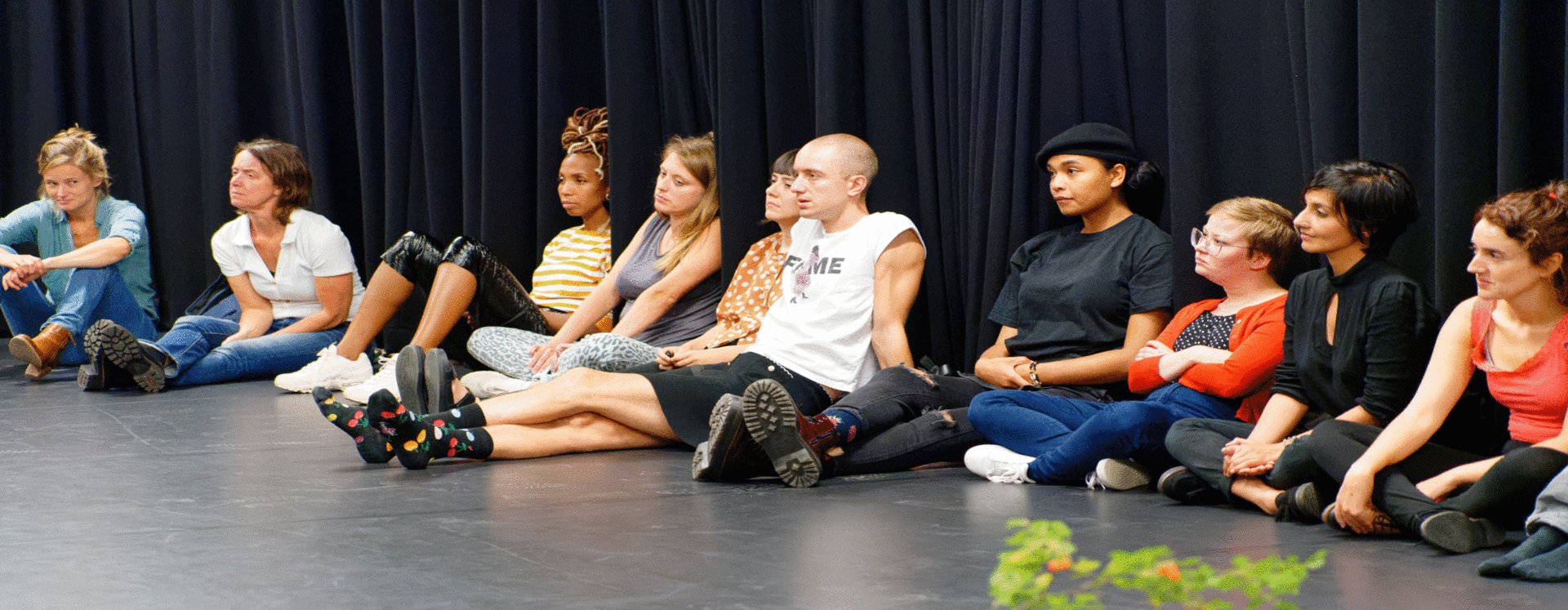It’s no secret that artistic research takes place at the Academy of Theatre and Dance, but what does it actually entail? In this interview, the eighteenth in a series, we take a peek behind the scenes, in conversation with dancer, choreographer, researcher and THIRD Fellow Kai Hazelwood (US).
Part 18: Snakes and grief
My research originated five years ago, when I found myself in a major health crisis. I’ve been dancing since the age of four and my whole life has been about dance. Then suddenly I was unable to do anything at all – I was lying in bed for weeks, sometimes months at a time.
The being I spent most of my time with was my snake. His tankwas at the foot of my bed, and I would watch him for hours. I was sick and I had no idea why. I would lose weight and then put it on again. I was in continual pain. So at a time when I had completely lost control over my own life I watched my snake getting fatter then thinner, being energetic then lazy, and shedding his skin – sometimes with ease, sometimes with difficulty. And all the while, whatever was going on, he seemed completely calm.
I wondered whether there was a lesson I could learn from the snake about how to deal with this unbearable transformation that I was going through. I started writing down my observations. I realised how wise the snake was, and how much there is for us to learn from animals who shed their skin, especially at moments when it feels like our world is in crisis.
And was it this research subject that you brought to the THIRD program in 2021?
Yes it was. I decided to apply just three days before the deadline. I didn’t know exactly what THIRD would entail, but intuitively I felt a powerful attraction to it. When I had the online conversation about my application I was in Los Angeles, and it was in the middle of the night. Even though I didn’t quite understand how THIRD worked, I immediately felt so at home with the people leading the conversation. I just knew it, I thought: ‘Yes, I’m going!’
From when I was very young I always wanted to be a ballerina, but because I’m black and tall – I’m 183cm – I didn’t quite fit the mould. That meant I had to broaden my horizons and I quickly found my own path. I found what I was looking for in modern and contemporary dance, and in movement theatre. But I still didn’t feel like I completely belonged anywhere. Along the way I arrived at a definition of what dance was to me, what I loved, what I was interested in and how I wanted to interact with people. It was at DAS Graduate School that for the first time I found a community I wanted to belong to. I realised I’d been looking for this my whole career.
You led a workshop titled Reptile Time as part of the Grief – Listening - Time project during Research Month this January.
Snakes have such a different relationship from us to time. They have barely changed over the course of evolution. If I give my snake a big rat to eat, he can easily go a whole month without any other food. When I was ill I learned from my snake that to heal I needed to slow down. At the same time it was encouraging to me that he could strike incredibly fast when I did give him food.
I got the participants in the workshop to slow down and to move like snakes over the floor. Snakes are very tactile creatures. I encouraged people to become aware of their contact with the floor, to experience as a ‘micro-dance’ even the tiniest change in that awareness – that change could come from something as subtle as breathing or the heartbeat. It was a duet between the body and the ground. By slowing down you intensely feel those things you’d rather push aside. It also creates time for grief.
Drawing inspiration from the tactile reading by Emilie Gallier, on the floor I also placed books I had collected during my research, along with short texts. We then slid on our bellies like snakes, among the texts, stopping to read whatever we encountered along the way. It was remarkable how much this change to our relationship with the ground and the slow movement influenced how we read. The people involved were also able to note down what they felt they needed to shed, or leave behind, and complete their own transformation through movement. At its core, it was all about the painful awareness that sometimes it is those things that we love deeply, that we will do anything to keep with us, that we need to let go.
Is this approach to connecting slowing down and grieving a kind of ritual that you personally do regularly, alone or in a group?
Yes it is. When I get back to Los Angeles I’ll be leading three ‘playgroups’ where we’ll perform a variety of rituals around the subject of reptile time. Each group will come together multiple times over a period of months. It’s something I need now – I don’t always feel good when I do it by myself. I sometimes get into things that can be really painful, and knowing I’ll be doing the same thing with other people makes it easier. It’s an ongoing group research project, and I call it a playgroup to remind me that it’s all about playing [laughs].
I imagine it’s essential to do this with other people, that that’s the foundation that makes the process possible.
Yes I think so too. We’ve all got plenty to grieve about. We’re living in an intense time. As well as being a personal process, shedding is something that happens in the interaction between people. For me personally this work is also anticolonial. It goes completely against the norms of the capitalist system, which is all about speed, performance and scoring. In that sense, the shedding process is also a route map to social and structural justice.
Right now I’m working on my book Shedding: A Playbook. It’s a collection of reflections, drawings and photographs, as well as exercises you can do alone or in a group. And as a reader you can snake through it any way you like.
--
From the announcement for Shedding: A Playbook:
‘A snake doesn’t hesitate when it’s time to shed. She doesn’t try to cling to something uncomfortable but familiar, she doesn’t worry what lies on the other side of shedding, who she’ll be, will others recognise her. She simply sheds because her body knows it is time.’
Text by Hester van Hasselt
The complete series of interviews Artistic research: New pathways to new knowledge? you can read here


